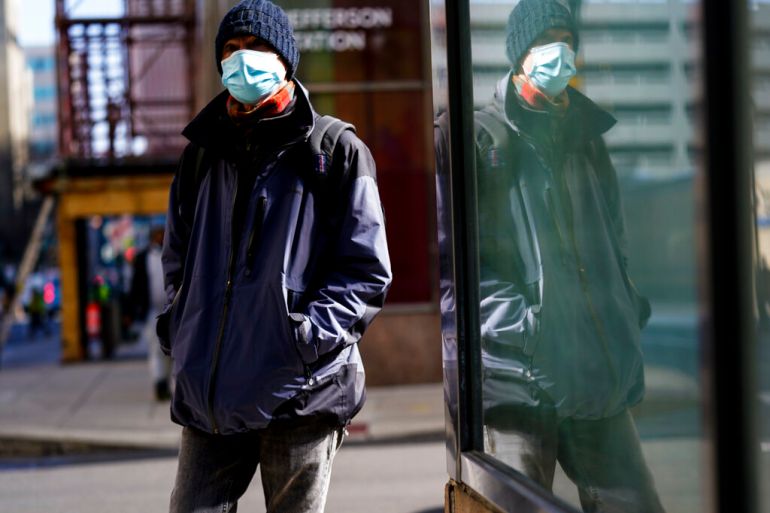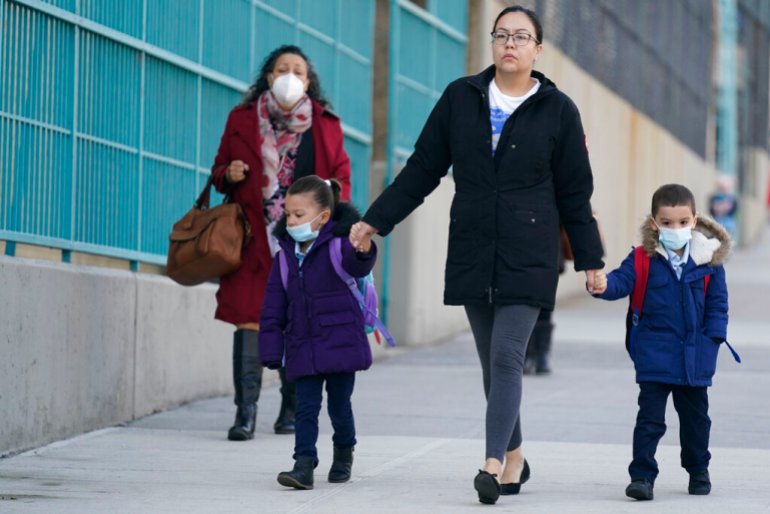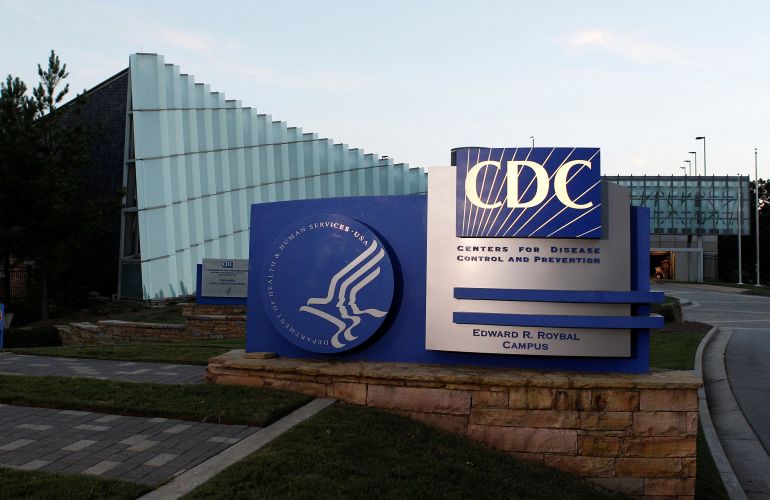CDC extends travel mask requirement to May 3 as COVID rises in US
Omicron subvariant BA.2 infections increase as US approaches one million deaths in the coronavirus pandemic.

The Biden administration announced on Wednesday that it is extending the nationwide mask requirement for public transit and air travel for 15 days as it monitors an increase in COVID-19 cases in the United States.
The Centers for Disease Control and Prevention (CDC) said it was extending the order, which had been set to expire on April 18, until May 3 to allow more time to study the BA.2 Omicron subvariant that is now responsible for most cases in the US.
Keep reading
list of 4 itemsAmerica’s new dystopian normal
Biden galvanises COVID fight with US mask mandate, WHO ties
Should you still wear a face mask?
“In order to assess the potential impact the rise of cases has on severe disease, including hospitalisations and deaths, and health care system capacity, the CDC order will remain in place at this time,” the agency said in a statement.
The CDC had been hoping to roll out a more flexible masking strategy that would have replaced the nationwide transit requirement. Hopes for relief from COVID-19 restrictions have risen since the World Health Organization said in February the acute phase of the pandemic may have passed by mid-year.

The mask mandate is the most visible vestige of government restrictions to control the pandemic, and possibly the most controversial. A surge of abusive and sometimes violent incidents on aeroplanes has been attributed mostly to disputes over mask-wearing.
The Transportation Security Administration (TSA), which enforces the rule for planes, buses, trains, and transit hubs, extended the requirement last month.
Critics have seized on the fact that states have rolled back rules requiring masks in restaurants, stores, and other indoor settings, and yet COVID-19 cases have fallen sharply since the Omicron variant peaked in mid-January.
Airlines for America, a trade group, on Wednesday in a letter continued to urge Biden’s administration “to lean into science and research, which clearly support lifting the mask mandate … It makes no sense to require masks on a plane when masks are not recommended in places like restaurants, bars or crowded sports facilities.”

The group cited the CDC’s guidance that nearly all Americans live in counties where they can avoid wearing masks indoors. The CDC in February eased its guidance for face covering.
The US Senate voted 57-40 last month to overturn the public health order requiring masks on aeroplanes and other forms of public transportation, drawing a veto threat from Biden.
There has been a slight increase in cases in recent weeks, driven by the BA.2 strain, with daily confirmed cases nationwide rising from about 25,000 per day to more than 30,000. Those figures are an undercount since many people now test positive in at-home tests that are not reported to public health agencies.
Severe illnesses and deaths tend to lag infections by several weeks. The CDC is awaiting indications of whether the increase in cases correlates to a rise in adverse outcomes before announcing a less restrictive mask policy for travel.
The CDC first issued a public health order requiring masks in interstate transportation and at transit hubs, including aeroplanes, mass transit, taxis, ride-share vehicles and trains effective in February 2021.
The total number of deaths in the US has exceeded 980,000 and is now approaching the one million milestone as the pandemic grinds on in its third year, according to data tracked by Johns Hopkins University.